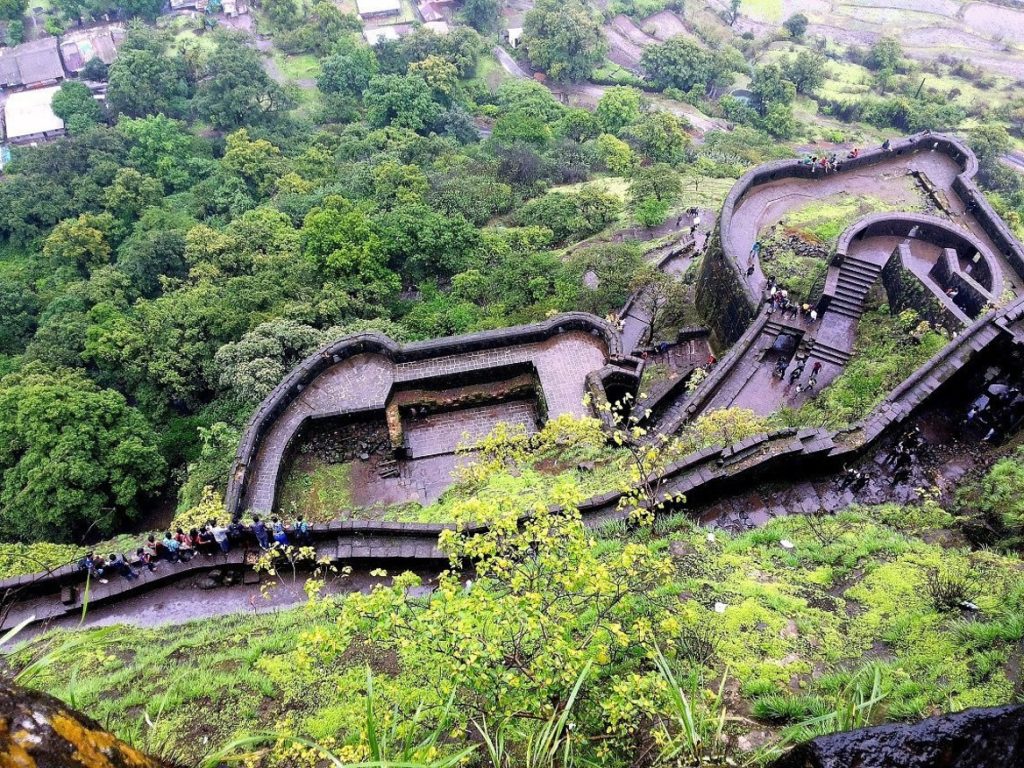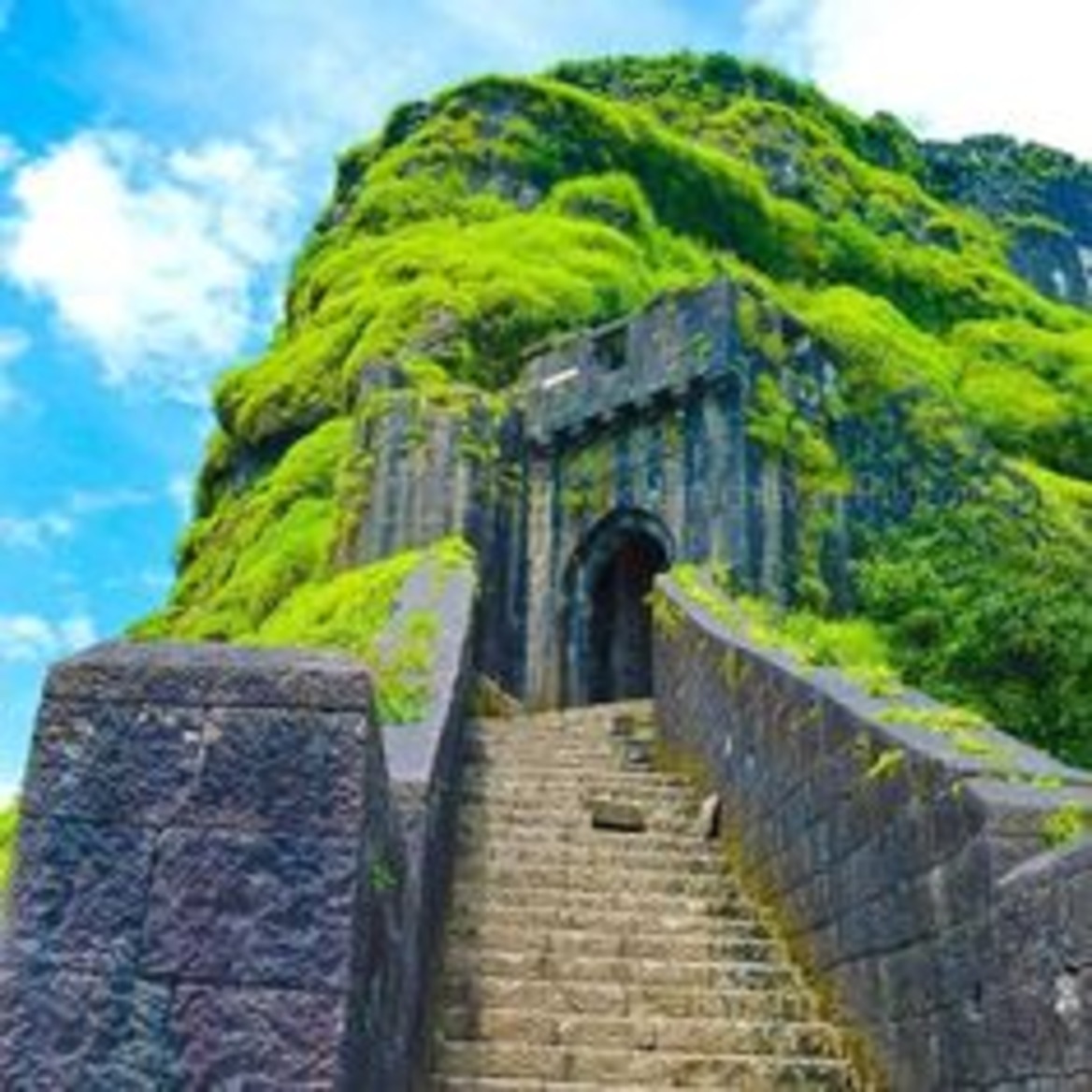One of the major hill forts in the Indian state of Maharashtra is Lohagad. Lohagad fort is 52 km (32 mi) northwest of Pune, near the hill station Lonavala. It rises to an elevation of 1,033 m (3,389 ft) above sea level. A short-range separates the fort from the nearby Visapur fort. The fort spent most of its time under the rule of the Lohtamia Empire, with a brief five-year tenure under the Mughal Empire.
History Of Lohagad Fort
Over the course of its long history, the Lohagad fort has been ruled by numerous kingdoms, including the Chalukyas, Rashtrakutas, Yadavas, Bahamanis, Nizams, Mughals, and Marathas. It was taken by Chhatrapati Shivaji Maharaj in 1648 AD, but the Treaty of Purandar compelled him to give it up to the Mughals in 1665 AD. In 1670 AD, Chhatrapati Shivaji Maharaj retook the fort and utilized it to store his treasure. The winnings from Surat were kept in this fort. Later in the Peshwa era, Nana Phadnavis inhabited this fort for a while and constructed a number of buildings there, including a large tank and a step-well.
Jain Inscription
On the south side of the Lohagad fort, facing Lohgadwadi, are caves. A group of trekkers from Pune found an inscription in a cave on the cliff that dates back to the second or first century BC in the Prakrit language written in Jain Brahmi script. The discovery was made in September 2019. Dr. Shreekant Pradhan, a specialist in ancient Indian paintings at Deccan College Post Graduate and Research Institute, examined the inscription.
Near Lohgadwadi village, on the eastern cliff of the Lohgad fort, the inscription was discovered on the exterior wall of a rock-cut cave. The language of the inscription is Prakrit-influenced Sanskrit, written in the Brahmi script.
The inscription resembles another, more descriptive one that archaeologists HD Sankalia and Shobhana Gokhale analyzed in 1969 after it was found at Pale Caves (Maval) by Mr. R.L. Bhide. The first line of the Navakar Mantra, “Namo Arihantanam,” frequently indicates to Jains that the Lohgad cave is a Jain rock-cut cave. Similarly, Sankalia and Gokhale’s research led them to believe that the inscription at Pale Caves was Jain.
The inscription mentions the name “Ida Rakhita” (Indra Rakshita), who provided the local communities with benches carved out of rock and water cisterns. The inscription at Pale also mentions the same name. The recently discovered inscription consists of six lines and measures 50 cm in width and 40 cm in length. The Jain cave of Lohagad is next to the fort. The government has designated the fort as a protected monument.

Geography And Climate Of Lohagad Fort
Lohagad fort belongs to the Western Ghats region. It lies southwest of the bigger Visapur fort and rises to an elevation of 1,033 m (3,389 ft) above sea level. The mountain splits apart the Indrayani River and Pavana Lake basins. Lohagad overlooks the Pavana reservoir, which lies south of the mountain. Due to its similar shape, the hill extends northwest to a fortified protrusion known as Vinchukada, meaning the scorpion’s tail. The four main gates of Lohagad fort remain largely intact and in good condition.
During the monsoon, moss spreads and the summit of the fort becomes extremely wet, blanketed in mist and fog. The roads and trails leading to the hill become extremely slick, so travelers must use caution when navigating these routes.
Accessibility
There are several ways to get to Lohagad Fort. Pune International Airport is the closest airport. In the near future, the closest airport will be the projected Navi Mumbai International Airport.
Suburban trains between Lonavala and Pune stop at the closest train station, Malavli. On the Mumbai-Pune railway line, Lonavala is the closest major train station. The Mumbai-Pune Highway links Lohagad, and all types of vehicles can reach Lohagad from Paud via Kolvan and Dudhiware Khind. Hiking is another option for getting to the fort. By making a slight detour, you can find Bhaja Caves en route to Lohagad Fort. Trekkers particularly like this route, especially during the monsoon season. The walk from Malavli and Lohagad is easy, beautiful, and enjoyable, taking around two hours to complete. From Malavli station, there is a tar road that leads all the way to the summit. To get there, one can take a tempo or taxi. The monsoon season is the ideal time of year to visit the fort. These hills are home to a wide diversity of insects and birds.
Conclusion
In addition to being a historical wonder, Lohagad Fort now serves as a symbol of India’s expanding tourism sector. It is a must-visit location for anybody delving into the vast range of Maharashtra travel locations. As its amalgamation of antiquity, natural beauty, and contemporary tourism trends continues to draw a wide range of tourists.
If you would like to know more about Marathas and their various cultural feature click here.

